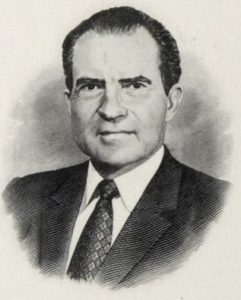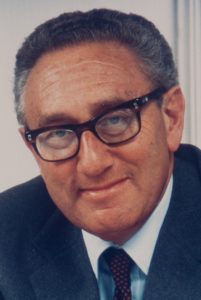By Jim O’Neal

Before Richard Nixon went to bed on Nov. 7, 1972, he gathered his supporters at the Sheraton Hotel in Washington, D.C., for a few final words of victory. As he turned away to retire, there was a loud chorus of voices chanting “Four more years!” This was an elite group of Republicans, but there was no way for the television audience to know that some of the most eminent chanters were felons.
And although the president had racked up a historic victory with 18 million more votes than his opponent, that was not the whole story. Only 55 percent of eligible voters actually went to the polls, a strong indication that perhaps a lot of people rejected both candidates. Plus, the Democrats continued to dominate both houses of Congress, limiting the power of the presidency to enact key legislation.
Even more significantly, this term would be the first (and only) in U.S. history where both the original president and vice president failed to complete their terms in office. Especially poignant was that both had been forced to resign … Spiro Agnew over corruption and Nixon over Watergate.
In a reference to Watergate, Democratic Party nominee George McGovern had described the Nixon administration as “the most corrupt in history,” but Gallup had reported in October that barely half the voters had even heard of the break-in and only 7 percent thought the president might be involved. The men around Nixon continued to be deeply involved in the cover-up … anything to push the issue past the election.

The president’s reelection campaign had been enormously enhanced in the final days by electrifying news from Henry Kissinger: He and Le Duc Tho, Hanoi’s chief negotiator, had achieved a breakthrough in their Paris talks. On Oct. 8, the North Vietnamese had dropped their insistence that South Vietnamese President Nguyen Van Thieu be ejected and instead a coalition government be installed in Saigon. Eighteen days later, Kissinger told a televised press conference that a final accord could be reached with just one more meeting. “Peace,” he said, “is at hand.”
But it wasn’t.
Saigon didn’t agree and Thieu vowed that, if necessary, his country would continue the war alone. Then the North became difficult again and Kissinger left Paris in despair on Dec. 14.
Nixon was furious with both sides and cabled North Vietnam’s Premier Pham Van Dong, warning him that unless serious negotiations were resumed within 72 hours, he would reseed Haiphong harbor with mines and unleash America’s aerial might: B-52s, F-4 Phantoms and Navy fighter bombers. General Curtis LeMay had proposed “bombing them back into the Stone Age” and Air Force generals assured the president that in two weeks, they could saturate the enemy homeland with more tonnage than in all the great raids of World War II – a terror-bombing on a scale never known before.
Hanoi did not respond and the result was the most savage chapter in the long history of our involvement as U.S. air bases on Guam and Thailand and carriers in the Gulf of Tonkin pounded them 24/7, flying more than 1,400 bombing sorties a week. Americans were stunned. Only a few days before, they thought the long nightmare was over.
Back in Washington, D.C., the other nightmare was also not going away. Despite the best efforts of All the President’s Men, it was also destined to end badly. A very complicated time in our history.
 Intelligent Collector blogger JIM O’NEAL is an avid collector and history buff. He is president and CEO of Frito-Lay International [retired] and earlier served as chairman and CEO of PepsiCo Restaurants International [KFC Pizza Hut and Taco Bell].
Intelligent Collector blogger JIM O’NEAL is an avid collector and history buff. He is president and CEO of Frito-Lay International [retired] and earlier served as chairman and CEO of PepsiCo Restaurants International [KFC Pizza Hut and Taco Bell].
